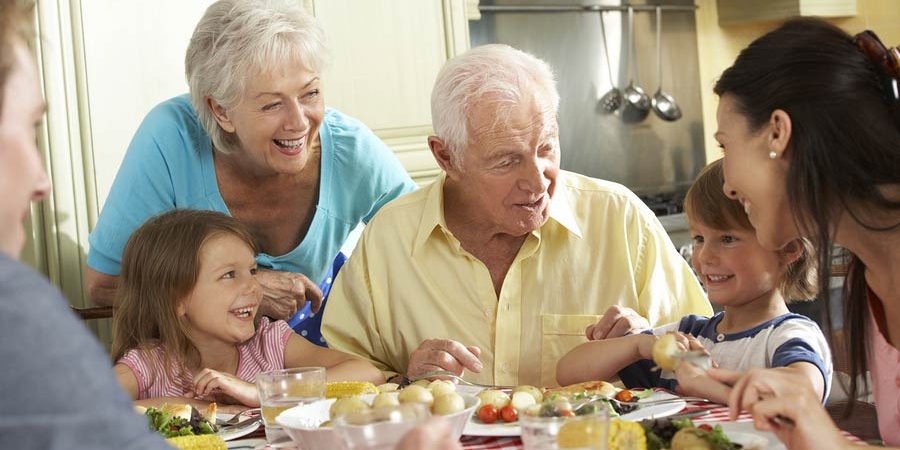Eating Right with Neuroendocrine Tumors
Home » For Patients old » Living with NETs » Nutrition
Proper nutrition helps support cancer treatment goals for improving outcomes, improving quality of life, and minimizing nutrition-related side effects.32 What, when, and how you eat can help ease burdensome symptoms associated with neuroendocrine cancer.
Diet choices for neuroendocrine tumors
Diet is important for those with neuroendocrine tumors. Fifty-eight percent of NET patients say they had to make dietary changes as a result of their disease.2 As a rule of thumb, choose foods and drinks that are gentle on your digestive system.
What to avoid eating if you have NET symptoms
To reduce the frequency and severity of gastrointestinal symptoms, try to reduce or cut out irritating food. If you’re experiencing digestive problems, avoid eating foods that are:
- High fiber (insoluble fiber)
- High amine
- High fat
- High sugar
- High salt
- High heat/hot spices (capsaicin)
- High alcohol content
- High in caffeine
- Highly carbonated beverages
- Highly processed foods
Talk to your doctor about your diet. Maybe even ask for a referral to see a registered dietitian who is well versed in nutrition for neuroendocrine tumor patients.
When and how to eat to help manage symptoms
- Minor adjustments in when and how you eat can also help alleviate diarrhea for those with neuroendocrine tumors.
- Eat small, frequent meals.
- Don’t drink while you are eating. Drink 30-45 minutes before a meal.
 Consume six to eight 8-ounce glasses of fluid a day. Spread fluid out during the day, taking regular sips of water. When you have diarrhea, drink no more than 4 ounces at a time.
Consume six to eight 8-ounce glasses of fluid a day. Spread fluid out during the day, taking regular sips of water. When you have diarrhea, drink no more than 4 ounces at a time.- Freeze food items right away. Dispose of aged, expired items. Throw out leftovers after 48 hours.
- Pay close attention to food safety to avoid food-borne illness.
What foods to eat when you have a neuroendocrine tumor
Work with your doctor, dietitian, and treatment team on a personalized nutritional plan to support your health. Your medical history and any co-occurring conditions will drive your daily food choices. Some of the foods choices others have found helpful are included in the below chart.37
| Eat This | Avoid This | |
|---|---|---|
| Vegetables & Fruit | Peeled, cooked vegetables
| Tomato and tomato products |
Cooked vegetables
|
| |
Raw vegetables
|
| |
Peeled fruits
|
| |
|
| |
| Grains |
|
|
| Dairy |
|
|
| Protein |
|
|
| Fats and Oils |
|
|
| Beverages |
|
|

Leigh Ann Burns, Louisiana State University, MS, RD, LDN
Nutrition for neuroendocrine cancer patients. Watch Video
Greta Macaire, MA, RD, CSO, University of California, San Francisco
Eating for health with NETs. Watch Video
Luz Chavez, RD, University of Chicago
Neuroendocrine for NETs Watch Video
Berkeley Limketkai, MD, Stanford University
Eating for Diarrhea Management Watch Video2Singh S, Granberg D, Wolin E, et al. Patient-reported burden of a neuroendocrine tumor (NET) diagnosis: results from the first global survey of patients with NETs. J Glob Oncol. 2016;2(1):43-53.
32National Cancer Institute. Pheochromocytoma and Paraganglioma Treatment (PDQ®)–Health Professional Version. https://www.cancer.gov/types/pheochromocytoma/hp/pheochromocytoma-treatment-pdq Accessed October 9, 2018.
37Find Food You Love. Lexicon Pharmaceuticals, In. 2017. https://www.foodyoulovebook.com/ Accessed October 31, 2018.


 Consume six to eight 8-ounce glasses of fluid a day. Spread fluid out during the day, taking regular sips of water. When you have diarrhea, drink no more than 4 ounces at a time.
Consume six to eight 8-ounce glasses of fluid a day. Spread fluid out during the day, taking regular sips of water. When you have diarrhea, drink no more than 4 ounces at a time.